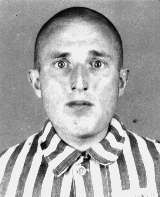You searched for: 叙利亚facebook开户【TG飞机:@bapingseo】代谷歌开户优化推广包上【TG电报:@bapingseo】老挝谷歌搜索推广【Telegram:@bapingseo】麻将官方进入天天稳胆2串1预测星力七代捕鱼软件真人官方网站?8cK2LY/I3oai9.html
<< Previous | Displaying results 751-800 of 993 for "叙利亚facebook开户【TG飞机:@bapingseo】代谷歌开户优化推广包上【TG电报:@bapingseo】老挝谷歌搜索推广【Telegram:@bapingseo】麻将官方进入天天稳胆2串1预测星力七代捕鱼软件真人官方网站?8cK2LY/I3oai9.html" | Next >>
-
Moshe Galek
ID CardMoshe was one of eight children born to Jewish parents in Sochocin, a predominantly Catholic village near Warsaw. Moshe was a self-made man, having founded a successful pearl-button factory in the village. While in his thirties, he married Fela Perznianko, the daughter of a prominent attorney from nearby Zakroczym. He brought his new wife to Sochocin, where they raised four daughters. 1933-39: In 1936 the Galeks moved to Warsaw, attracted by the city's cultural life. When Germany invaded Poland on…
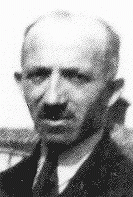
-
Leon Franko
ID CardLeon was born to a large, Ladino-speaking, Sephardic-Jewish family. The Frankos lived in a large house in ethnically diverse Bitola, a town located in the southern part of Yugoslav Macedonia, near the Greek border. Leon's father, Yiosef, was a successful fabric merchant. The Frankos' children attended Yugoslav public schools where they learned to speak Serbian. 1933-39: Upon completing his schooling, Leon became a fabric merchant in Bitola. A handsome man from a well-to-do family, Leon was popular. His…
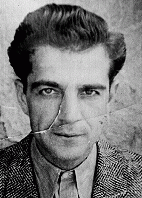
-
Marta Herman
ID CardThe younger of two daughters, Marta was raised by Hungarian-speaking Jewish parents in Kosice, a city in Slovakia. Marta attended a Jewish elementary school. Her father ran a small grocery store. 1933-39: After Marta finished elementary school, she began secondary school. The language of instruction was Slovak and Jews faced no discrimination until November 1938 when Hungarian troops marched into southern Slovakia. With Germany's blessing, Kosice became part of Hungary and was renamed Kassa. Their new…

-
Maria Orlicka
ID CardMaria was born to a poor family in the industrial town of Jaworzno, not far from Krakow, in southwestern Poland. Both of Maria's parents worked. Like her parents, Maria was baptized in the Roman Catholic faith. 1933-39: Maria took care of the house when her parents were working. She was 11 years old when the Germans invaded Poland on September 1, 1939. German troops reached Jaworzno that same month. Jaworzno was in an area of Poland that became formally annexed to Germany. 1940-44: The Germans arrested…
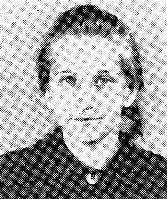
-
Mendel Grynberg
ID CardMendel was raised in a large, Yiddish-speaking, religious Jewish family in Sokolow Podlaski, a manufacturing town in central Poland with a large Jewish population of about 5,000. Upon completing school, Mendel worked as a shoemaker. He was also active in a local Zionist organization. 1933-39: Mendel was married and had a family when the Germans invaded Poland on September 1, 1939. Aircraft bombed the town's market and other civilian targets before victorious German troops marched into Sokolow Podlaski on…
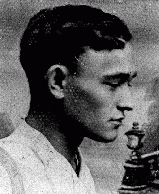
-
Rozia Grynbaum
ID CardRozia was the second-oldest of nine children born to religious Jewish parents in Starachowice, a town in east-central Poland. Their small one-story house served as both the family's residence and their tailor shop. The tailoring was often done in exchange for goods such as firewood or a sack of potatoes. Rozia worked in the shop sewing women's clothing. 1933-39: Rozia married a Jewish tailor from Radom, a large town some 60 miles south of Warsaw. The couple settled in Starachowice, and they ran a tailor…
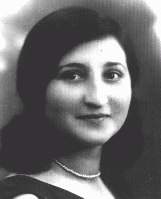
-
Willibald Wohlfahrt
ID CardWillibald was the youngest of six children born to Catholic parents in a village in the part of Austria known as Carinthia. Disillusioned with Catholicism, his father and mother became Jehovah's Witnesses when Willibald was an infant, and they raised their children in their new faith. His father became the leader of the local Jehovah's Witness congregation. 1933-39: Willibald lived in a beautiful area near lakes and mountains. The Wohlfahrts were active in Jehovah's Witness missionary work, even though…

-
Rachel Lea Galperin
ID CardRachel, born Rachel Karpus, was born to a Jewish family in the northeastern Polish city of Vilna. At the age of 16, Rachel married Reuven Galperin, a typesetter for a Jewish newspaper in the city, and the couple subsequently had 16 children. Only nine of the children lived to the 1930s. 1933-39: In addition to caring for her children, Rachel also operated a small grocery on Nowigorod Street. In 1938 Rachel's husband died. One year later, on September 1, 1939, Germany invaded Poland and 17 days after that…
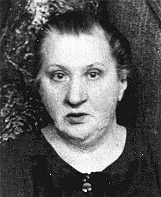
-
Mayer List
ID CardMayer was born into a Jewish family in a village near Warsaw. His family was active there in the workers' movement. They decided to emigrate when Mayer was a child; his father hoped to find work in Argentina. As a young man, Mayer was arrested for being a communist. In prison, he organized a hunger strike. The police released him to keep him from recruiting the other prisoners to communism. 1933-39: Mayer joined one of the International Brigades and went to Spain to fight in the civil war against Franco…

-
German-Soviet Pact
ArticleThe German-Soviet Pact paved the way for the joint invasion and occupation of Poland by Nazi Germany and the Soviet Union in September 1939.
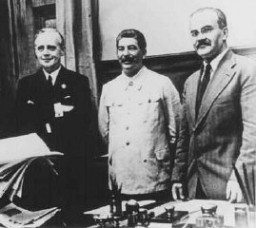
-
Robert Weinberger
ID CardRobert was raised in a German-speaking Jewish family in the Slovakian capital of Bratislava, where his father owned a dental supply business. Robert grew up bilingual: He learned Hungarian from his mother and he attended a German-language Jewish grammar school. 1933-39: When Hitler rose to power in Germany, anti-German sentiment grew in Slovakia and many Jews in Bratislava, like Robert's parents, who had originally identified with German culture, enrolled their children in Slovak schools. In March 1939…
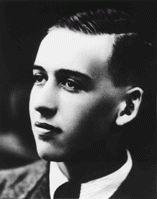
-
Henry Morgenthau Jr.
ArticleHenry Morgenthau Jr had a key role in creating and operating the War Refugee Board, a government agency tasked with rescuing and providing relief for Jews during the Holocaust.
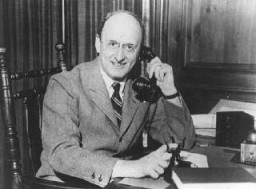
-
The Nuremberg Race Laws
ArticleThe Nazi regime’s Nuremberg Race Laws of September 1935 made Jews legally different from their non-Jewish neighbors. The laws were the foundation for future antisemitic measures .

-
Warsaw Polish uprising
FilmOn August 1, 1944, the Armia Krajowa (Polish Home Army) launched an uprising in Warsaw against the German occupiers. Although the Western allies dropped ammunition and supplies and the Soviet army was within sight of the city, the uprising was crushed. This German newsreel footage shows the German suppression of the uprising.
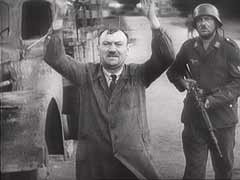
-
Drexel Sprecher describes layout of the courtroom at Nuremberg
Oral HistoryDrexel Sprecher was educated at the University of Wisconsin, the London School of Economics, and at the Harvard School of Law before receiving a position at the US Government's Labor Board in 1938. He enlisted in the American military after the United States declared war on Germany, and was posted to London. After the war, Sprecher served as a prosecutor of Nazi war criminals at the Nuremberg trials.

-
Lucine Horn describes the German occupation of Lublin
Oral HistoryLucine was born to a Jewish family in Lublin. Her father was a court interpreter and her mother was a dentist. War began with the German invasion of Poland on September 1, 1939. Lucine's home was raided by German forces shortly thereafter. Soon after the German occupation of Lublin, Jews there were forced to wear a compulsory badge identifying them as Jews. A ghetto in Lublin was closed off in January 1942. Lucine survived a series of killing campaigns and deportations from the ghetto during March and…
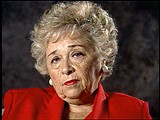
-
Marcelle Burakowski with her eight-year-old twin sisters, Berthe and Jenny
PhotoMarcelle Bock (born Marcelle Burakowski) was born in 1931. She was the oldest of three girls. She had twin sisters, two years younger than herself, named Berthe and Jenny. Her father worked as a tailor of men's overcoats. Marcelle is ten years old in this photograph. Her sisters are eight years old. Marcelle, her mother, and sisters were arrested during the roundup of July 16-17, 1942, and taken to the Vélodrome d'Hiver in Paris, France. Marcelle managed to escape during transit from…

-
Chaim Kozienicki
ArticleChildren's diaries bear witness to some of the most heartbreaking experiences of the Holocaust. Learn about the diary and experiences of Chaim Kozienicki.
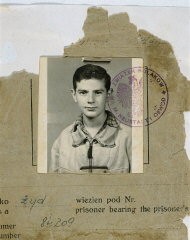
-
SS: Key Dates
ArticleKey dates in the history of the SS (Schutzstaffel; Protection Squadrons), charged with the leadership of the “Final Solution,” the murder of European Jews.

-
Lublin/Majdanek Concentration Camp: Administration
ArticleIn 1940, the Nazis established Lublin (Majdanek) concentration camp in Lublin, Poland. Learn more about camp administration.
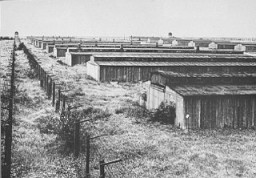
-
German Foreign Policy, 1933–1945
ArticleAdolf Hitler came to power with the goal of establishing a new racial order in Europe dominated by the German “master race.” This goal drove Nazi foreign policy. Learn more

-
The Kielce Pogrom: A Blood Libel Massacre of Holocaust Survivors
ArticleThe Kielce pogrom was a violent massacre in the town of Kielce, Poland in 1946. Learn more about the events that led up to the attack and the aftermath.

-
Nazi Persecution of Jehovah's Witnesses
ArticleJehovah's Witnesses were subjected to intense persecution under the Nazi regime. Read more to learn why and how the Nazi regime targeted them.

-
Berlin
ArticleBerlin was home to Germany’s largest Jewish community. It was also the capital of the Third Reich and the center for the planning of the "Final Solution."

-
German Jewish Refugees, 1933–1939
ArticleLearn more about the plight of Jewish refugees who attempted to escape Germany between 1933 and 1939.
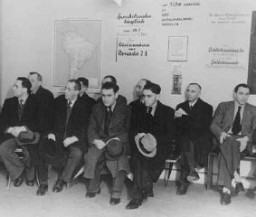
-
Escape from German-Occupied Europe
ArticleMany Jews sought to leave Germany after the Nazi rise to power. After WWII began, escape from areas under Nazi control became increasingly difficult or impossible.

-
Chiune (Sempo) Sugihara
ArticleJapanese diplomat Chiune (Sempo) Sugihara was recognized as a "Righteous Among the Nations" for his aid to refugees in Lithuania during World War II.

-
Corrie ten Boom
ArticleCorrie ten Boom was recognized as a Righteous Among the Nations for her efforts to shelter Jews during the German occupation of the Netherlands

-
Foehrenwald Displaced Persons Camp
ArticleAfter WWII, many Holocaust survivors, unable to return to their homes, lived in displaced persons camps in Germany, Austria, and Italy. Read about Foehrenwald DP camp.
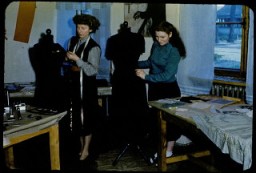
-
Nazi Propaganda and Censorship
ArticleNazi efforts to control forms of communication through censorship and propaganda included control of publications, art, theater, music, movies, and radio.

-
Emanuel Ringelblum and the Creation of the Oneg Shabbat Archive
ArticleEmanuel Ringelblum was a Warsaw-based historian and social welfare worker before WWII. Learn about the secret archive he would establish in the Warsaw ghetto.

-
Vittel
ArticleGerman authorities established the Vittel internment camp in occupied France in 1941. It belonged to the complex of POW camps designated Frontstalag 194.
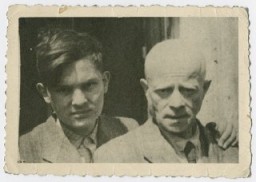
-
Warsaw Polish Uprising
Timeline EventAugust 1, 1944. On this date, the Warsaw uprising began with the Polish Home Army rising against the Nazis in an attempt to liberate Warsaw.

-
Liberation of Ravensbrück
Timeline EventApril 30, 1945. On this date, Soviet forces arrived at Ravensbrück concentration camp in Germany.

-
Battle of the Somme
Timeline EventJuly 1, 1916. On this date, the most causalities in a single day during World War I occurred at the Battle of Somme.
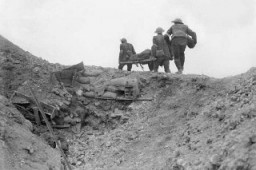
-
Law on Alteration of Family and Personal Names
Timeline EventAugust 17, 1938. On this date, the German government issued the Executive Order on the Law on the Alteration of Family and Personal Names.
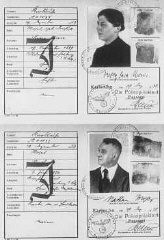
-
German Jews' Passports Declared Invalid
Timeline EventOctober 5, 1938. On this date, the Reich Ministry of the Interior invalidated all German Jews' passports and required them to have a "J" stamped on them.

-
Adolf Eichmann Found Guilty
Timeline EventDecember 15, 1961. On this date, Adolf Eichmann was found guilty of crimes against the Jewish people and sentenced to death.
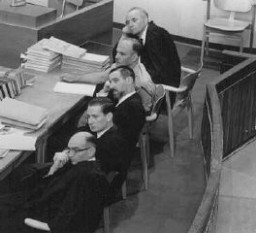
-
The 42nd Infantry Division during World War II
ArticleThe 42nd Infantry Division participated in major WWII campaigns and is recognized for liberating the Dachau concentration camp in 1945.
-
Collections Highlight: Auschwitz Through the Lens of the SS
ArticleKarl Höcker created a personal album of photographs chronicling SS officers’ activities at Auschwitz. Learn about this chilling collection.
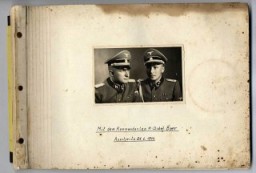
-
Auschwitz Through the Lens of the SS: The Album
ArticleLearn about photographs contained in Karl Höcker’s album depicting official visits, ceremonies, and the social activities of the Auschwitz camp staff.
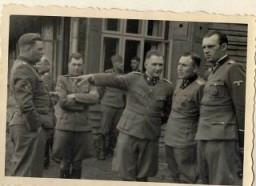
-
Welek Luksenburg
ID CardWelek grew up in Dabrowa Gornicza, an industrial town in western Poland. His father, Simcha, was a wholesale meat merchant and his mother, Rozalia, served as president of the local chapter of the Women's International Zionist Organization. Welek's older brother, Szlomo, was a dentist. The Luksenburgs were among the several thousand Jews who lived in Dabrowa Gornicza. 1933–39: Like many other children in the town, Welek attended public school. Because his family was very religious, he did not attend…

-
Abraham Bergman
ID CardAbraham was born to a Jewish family in Krasnik, a town in the Lublin district of Poland. The town had a large Jewish population. Abraham's father was a tailor. When Abraham was 2, his mother died and he was raised by his grandmother. At the age of 7, Abraham started public school. 1933-39: Abraham liked school but found it difficult. The Christian children often yelled at the Jews, "You killed our God." One year, on the day before Christmas break, some kids brought ropes tied to iron weights to school.…

-
Walter Szczeniak
ID CardWalter was the oldest of eight children born to Polish-Catholic immigrant parents in a town near Boston, Massachusetts. The family moved back to Poland when Walter was a child, and lived on a family farm near Ostroleka in northern Poland that Walter's mother had inherited. Because his father's American nickname was "Stetson," Walter was mistakenly registered as "Charles Stetson" on his American birth certificate. 1933-39: After Walter completed secondary school, his father sent him to the University of…

-
Elias (Elya) Grosmann
ID CardElias was born in a small town in the hill country of northeastern Slovakia. His family was Jewish, and he grew up in a religious home in which both Yiddish and Hungarian were spoken. His father was a peddler and his mother ran a small general store. Besides attending public schools, Elias received a formal Jewish education and attended Medzilaborce's rabbinical academy. 1933-39: The townspeople were mostly Jewish and worried about Nazi Germany. The German annexation of Austria in March 1938 alarmed them.…
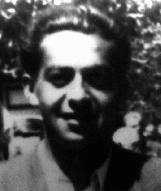
-
Elsa (Eliska) Skutezka Kulkova
ID CardElsa was the eldest of three children born to Jewish parents in Brno, the capital of Moravia, where her father ran a successful shipping company. In 1920 she graduated from a German-language secondary school. She married and moved to Bratislava, but the marriage was unsuccessful and Elsa returned to Brno in 1926, where she opened a millinery business. 1933-39: On May 24, 1933, Elsa married Robert Kulka and the couple settled in Robert's hometown of Olomouc. Their son, Tomas, was born a year and a day…
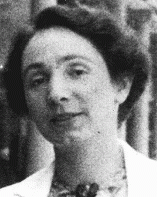
-
Lidia Lebowitz
ID CardThe younger of two sisters, Lidia was born to Jewish parents living in Sarospatak, a small town in northeastern Hungary. Lidia's parents owned a successful dry goods business. At the time, ready-made clothes were still rare in the countryside. Townspeople and local farmers would purchase fabric at the Lebowitz store and then take it to their tailor or seamstress to be sewn into clothes. 1933-39: Lidia was 2 when her Aunt Sadie, who had immigrated to the United States many years earlier, came to visit…
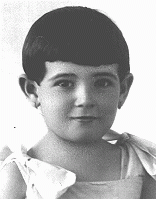
-
Ema Schwarzova Skutezka
ID CardOne of two children born to religious Jewish parents, Ema was raised in the small Moravian town of Lomnice, where her mother ran a general store. In 1901 Ema married Eduard Skutecky, a regular customer at her mother's store. The couple settled in the city of Brno, where they raised three children. Eduard ran a shipping company. 1933-39: By 1933 Ema's three children were grown and had moved out. Four years later her husband passed away, and Ema moved in with her eldest daughter, Elsa. Elsa and her husband…

-
Siegfried Wohlfarth
ID CardThe elder of two sons of religious German-Jewish parents, Siegfried grew up in the city of Frankfurt. Upon completing his education, he became a certified public accountant in Frankfurt. In his free time he worked as a freelance music critic. While on a vacation in 1932 on the North Sea island of Norderney, he met Herta Katz, a young woman with whom he quickly fell in love. 1933-39: The Nazis had fired Siegfried from his government job because he was Jewish. Although his mother opposed the match,…

-
Karl Gorath
ID CardKarl was born in the small town of Bad Zwishenahn in northern Germany. When he was 2, his family moved to the port of Bremerhaven. His father was a sailor and his mother became a nurse in a local hospital. After his father died, Karl continued to live with his mother. Karl was 20 when he began training as a deacon at his parish church. 1933-39: Karl was 26 when his jealous lover denounced him and he was arrested at his house under paragraph 175 of the criminal code, which defined homosexuality as an…
